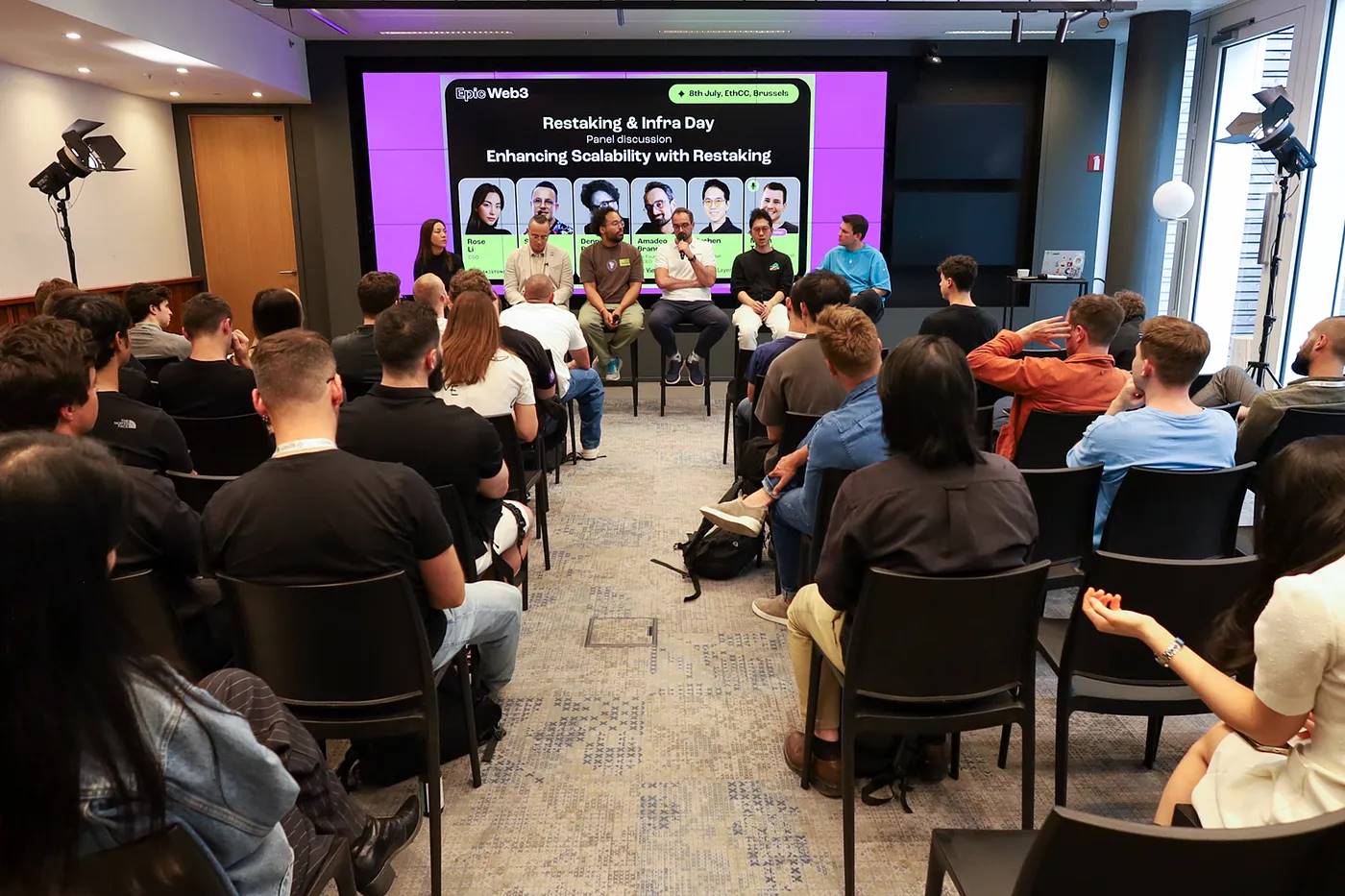Author: Henry Ang
Compiled by: TechFlow
This year has been filled with major milestones for crypto: the launch of Bitcoin and Ethereum ETFs, bipartisan support for crypto in the U.S., and Circle’s expansion into new currencies, the first being EURC. While these developments are encouraging, there is still unease about where the next major inflection point will occur and how we, capital allocators, should position ourselves accordingly.

Image: Henry Ang, blockchain investor at BACKED VC
At some of the EthCC events, we saw many teams working on infrastructure with very little differentiation between them. Occasionally, an application developer would walk between booths, talking to these teams and thinking about where to build best. Our view is that this fragmentation has led to a dilution of focus, and application developers have to navigate a complex set of choices. While infrastructure is abundant, there is a lack of cohesive and impactful application development. To borrow a phrase we have heard, we are in a situation where "we built a bunch of highways without cars."
This is where capital allocators (including us) have a huge responsibility in shaping the industry. While funding infrastructure is not fundamentally bad, the potential returns from later-stage, less differentiated projects are distorting the market, creating a dilemma for builders: should you try to build an app with product-market fit that is harder to achieve and risk not getting funded due to poor market conditions? Or would it be easier and more likely to get funded by building an infrastructure project that is somewhat differentiated from other competitors, thereby ensuring years of capital turnover? This trend of heavy investment in infrastructure is stifling innovation in application development, where the next big breakthroughs are most likely to happen. So how can we reverse this trend?

Image: Henry attended an interesting talk on restaking and infrastructure at this year’s EthCC Brussels conference, given by one of our portfolio founders, Amadeo Brands from YieldNest (see image)
Shifting the Tide: From Infrastructure to Applications
The good news is that markets tend to self-correct, although it takes time. We believe that funds that are still blindly copying the infrastructure playbook from the previous cycle will begin to underperform, which will limit their ability to raise new funds. If this phenomenon is extended to the entire industry, we should see a healthy reset of the funding landscape. Ahead of this transformation, we want to share some of the inside insights that shape our own investment thesis.
First , it is not clear that private infrastructure investments represent better opportunities than public investments. A common investment heuristic is that infrastructure has a larger total market (TAM) and can afford to take longer to find product-market fit, so capital is willing to price it based on existing benchmarks. For example, Monad (a parallelized EVM layer 1 blockchain) was last valued at $3 billion, which can be considered "fair" given that Sei, a parallelized EVM competitor, is trading at a valuation of $2.6 billion, while Aptos and Sui, as alternative L1 competitors, are trading at valuations of $6.8 billion and $8.6 billion, respectively. If you believe that Monad has a "better" community and technology, and aligns with ETH, resulting in greater liquidity, you could probably underwrite a base case of ~$10-20 billion in the right market conditions, representing a 3-6x return. However, these opportunities do not support the economics of early-stage venture capital: if you invest $3 million in this round, a 3-6x return only translates into a 6-15% total value investment impact, assuming you manage a $100 million fund.
Second, the risk/reward of doing this type of investment as a private venture deal is not very favorable compared to liquid market opportunities. Instead of underwriting a 3-6x return on Monad, you might as well make a similar return configuration (with a liquidity priority) on Solana at ~$80 when it breaks out of a year-old resistance level and has clearer metrics (number of users, total locked value, trading volume, etc.). You will also have greater investment size flexibility and a shorter payback period, which will translate into better internal rate of return (IRR). In summary, how should we do early-stage venture investing in the crypto space?
Focus on the application layer
At BACKED, our strategy is to selectively focus on infrastructure investments and invest the majority of our time in evaluating application layer projects.
This decision stems from our assumption that the application layer is severely undervalued and underinvested . For example, Aave has a total value locked (TVL) of over $11.5 billion and annualized fees of $302.5 million, while its fully diluted valuation (FDV) is $2.1 billion. In contrast, Aptos has a fully diluted valuation of $6.8 billion, but a total value locked of only $378 million and annualized fees of only $850,000. Is Aave undervalued or is Aptos overvalued? Regardless, we believe that the market will more accurately reflect value over time, and the applications that serve the most users and have strong financial metrics will ultimately win.
Encouragingly, we’ve already started to see early signs of this. For example, applications on Solana like Jito, Raydium, and pump.fun are beginning to generate fees (and revenue) that exceed the blockchain infrastructure they rely on. Moving forward, we expect valuations to more accurately reflect these fundamentals.
Therefore, our investment thesis is to support founders who deeply understand and actively leverage blockchain and cryptoeconomics to deliver superior applications.
We believe that applications can be roughly divided into two categories - crypto-native and crypto-enabled, each targeting different user groups. Most applications today are crypto-native: such as decentralized finance (DeFi) or Web3 games, where users are mainly on-chain. These applications drive permissionless, fully on-chain economies, and our areas of particular interest include:
Perp Dexes — drive most CEX volume, but on-chain volume remains small
Decentralised Social — Providing new ways to consume content
Insurance - As an important infrastructure, it faces many challenges in risk assessment

Image: Henry (right) speaking at the Future of Gaming conference at Slush 2023
However, there are many applications that are crypto-enabled where users don’t have to be on-chain. Some areas that we are immediately interested in include:
Payments — Faster settlement and global reach through blockchain infrastructure
DePIN — Ownership tracking through token issuance and NFTs
Advertising & Attribution Markets — Enabled by On-Chain Social Graph
Asset Tokenisation — through on-chain transparency and smart contract automation
Capital allocators play a key role in guiding the blockchain industry
Looking ahead, we must play a key role in guiding the blockchain industry in the direction of sustainable growth and true innovation. By refocusing our efforts to support application developers who provide real value and utility, we can catalyze the next wave of breakthroughs in this space.







